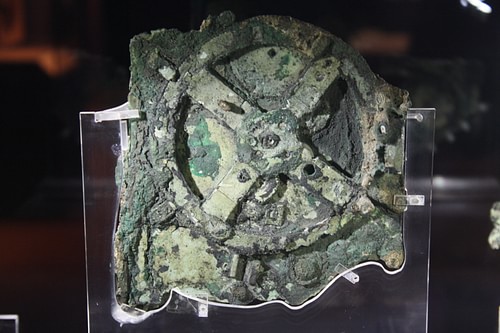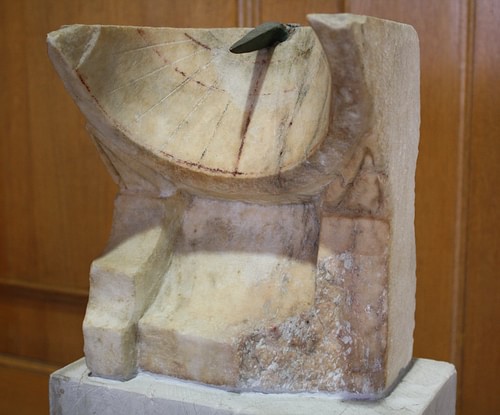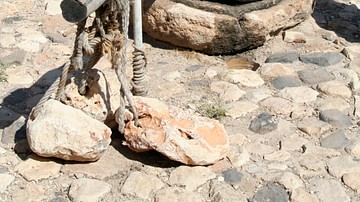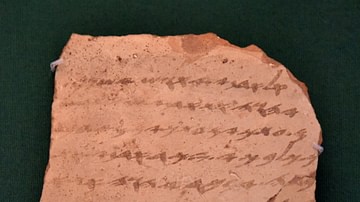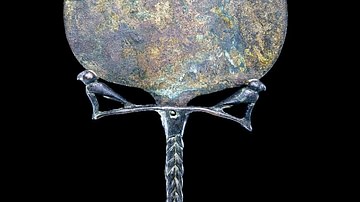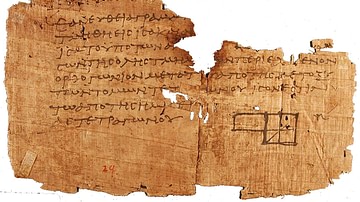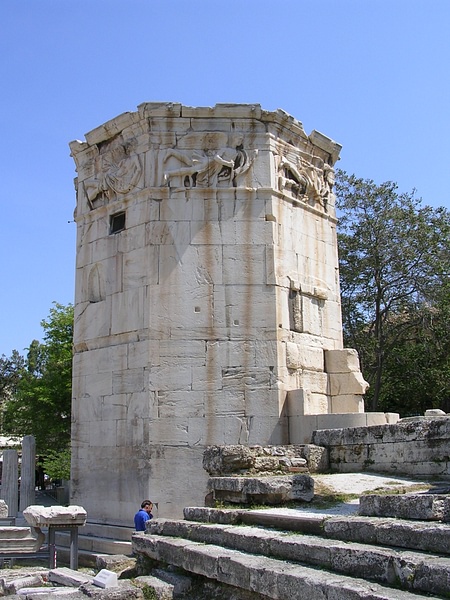
The passage of time has always been a preoccupation of human beings, whether it be a question of satisfying basic needs such as when to eat and sleep, the importance of seasons for migratory and agricultural purposes or a more sophisticated measuring of time into defined periods of weeks, days and hours.
Using Celestial Bodies
The earliest method of measuring time was through observation of the celestial bodies - the sun, moon, stars and the five planets known in antiquity. The rising and setting of the sun, the solstices, phases of the moon, and the position of particular stars and constellations have been used in all ancient civilizations to demarcate particular activities. For example, Egyptian and Minoan buildings were often constructed in orientation to the rising sun or aligned to observe particular stars. Some of our earliest texts such as those by Homer and Hesiod around the 8th century BCE describe the use of stars to specifically determine the best periods to sail and farm, advice which remains valid today.
Star calendars were created in the Near East, and Greek calendars were likely based on the phases of the moon. The Greek Parapegmata from the 5th century BCE, attributed to Meton and Euctmon, was used to map a star calendar and a calendar of festivals linked to astronomical observations survives in an Egyptian papyrus from Hibeh dated to around 300 BCE. The celebrated Antikythera Mechanism, dated to the mid-1st century BCE and found in an Aegean shipwreck, is a sophisticated device which, through a complicated arrangement of wheels and gears, demonstrated and measured the movement of celestial bodies, including eclipses.
Sundials
The sun continued to be the primary source of time measurement throughout the Classical Period. Indeed, sunrise and sunset determined the sessions of both the ancient Assembly of Athens and the Roman Senate, and in the latter, decrees decided after sunset were not deemed valid. Early sundials merely indicated months but later efforts attempted to break the day into regular units and indicate the twelve hours of the day and night first invented by the Egyptians and Babylonians. The origins of the half-hour measurement are unclear but it is mentioned in a 4th-century BCE Greek comedy by Menander and so must have been commonly used. The earliest surviving sundial dates from Delos in the 3rd century BCE.
From Hellenistic times the measurement of time became ever more precise and sundials became more accurate as a result of a greater understanding of angles and the effect of changing locations, in particular latitude. Sundials came in one of four types: hemispherical, cylindrical, conical, and planar (horizontal and vertical) and were usually made in stone with a concave surface marked out. A gnomon cast a shadow on the surface of the dial or more rarely, the sun shone through a hole and so created a spot on the dial. In the Roman Empire, portable sundials became popular, some with changeable discs to compensate for changes in location. Public sundials were present in all major towns and their popularity is evidenced not only in archaeological finds - 25 from Delos and 35 from Pompeii alone - but also in references in Greek drama and Roman literature. There is even a famous joke on the subject attributed to Emperor Trajan, who, when noticing the size of someone's nose, quipped: "If you put your nose facing the sun and open your mouth wide, you'll show all the passerby the time of day" (Anthologia Palatina 11.418). By Late Antiquity (c. 400 to 600 CE) highly sophisticated portable sundials were produced which could be adjusted to as many as 16 different locations.
Water Devices
Time measuring devices were also invented which used water. Perhaps evolving from earlier oil lamps, which were known to burn for a set period of time with a defined quantity of oil, the early so-called water-clocks released a specified quantity of water from one container to another, taking a particular time to do so. Perhaps the earliest came from Egypt around 1600 BCE, although they may have borrowed the idea from the Babylonians. The Greeks used such a device (a klepsydra) in Athenian law courts and it determined how long a single speech could last: approximately six minutes.
The Greek and Roman army also used water-clocks to measure shift-work, for example, night watches. More sophisticated water-clocks were developed which poured water into the device thereby raising a floating drum and consequently turning a cog whose regulated movement could be measured. The first such clocks are attributed to Ctesibius around 280 BCE and Archimedes is largely credited with developing the device to achieve greater accuracy. Large public water-clocks were also common and often measured a whole day, for example in the 4th century BCE agora of Athens there was such a clock which contained 1000 litres of water. The 2nd-century BCE Tower of the Winds in Athens, built by Andronicus, also contained a large water-clock and no less than nine sundials on its outer walls.
